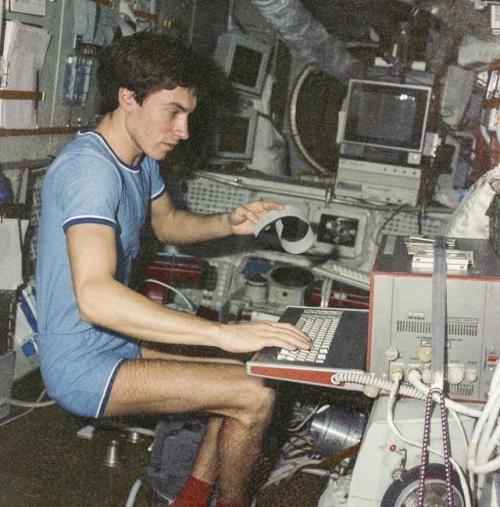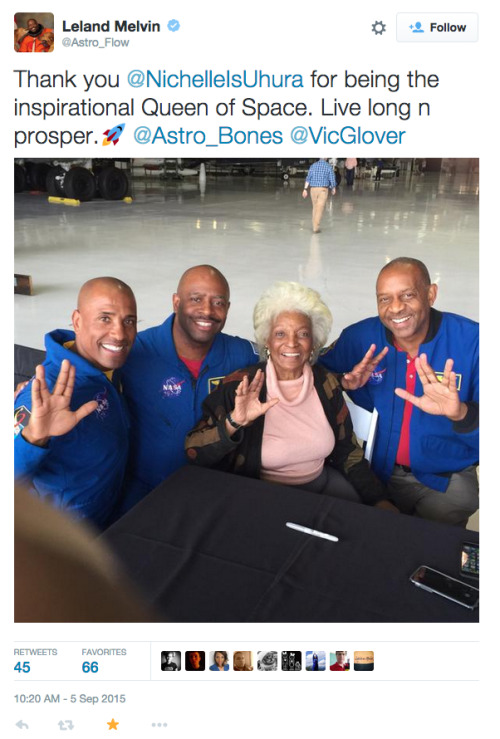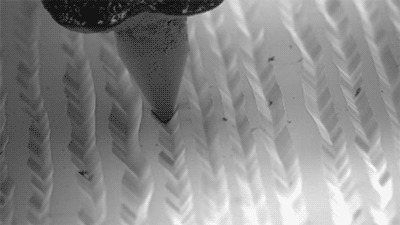Cost Per Kg For Human Spaceflight

Cost per kg for human spaceflight
via reddit
More Posts from Fillthevoid-with-space and Others
NASA's Swift Mission Maps a Star's 'Death Spiral' into a Black Hole
NASA - Swift Mission patch. March 20, 2017 Some 290 million years ago, a star much like the sun wandered too close to the central black hole of its galaxy. Intense tides tore the star apart, which produced an eruption of optical, ultraviolet and X-ray light that first reached Earth in 2014. Now, a team of scientists using observations from NASA’s Swift satellite have mapped out how and where these different wavelengths were produced in the event, named ASASSN-14li, as the shattered star’s debris circled the black hole. “We discovered brightness changes in X-rays that occurred about a month after similar changes were observed in visible and UV light,” said Dheeraj Pasham, an astrophysicist at the Massachusetts Institute of Technology (MIT) in Cambridge, Massachusetts, and the lead researcher of the study. “We think this means the optical and UV emission arose far from the black hole, where elliptical streams of orbiting matter crashed into each other.”
Swift Charts a Star’s ‘Death Spiral’ into Black Hole
Video above: This animation illustrates how debris from a tidally disrupted star collides with itself, creating shock waves that emit ultraviolet and optical light far from the black hole. According to Swift observations of ASASSN-14li, these clumps took about a month to fall back to the black hole, where they produced changes in the X-ray emission that correlated with the earlier UV and optical changes. Video Credits: NASA’s Goddard Space Flight Center. Astronomers think ASASSN-14li was produced when a sun-like star wandered too close to a 3-million-solar-mass black hole similar to the one at the center of our own galaxy. For comparison, the event horizon of a black hole like this is about 13 times bigger than the sun, and the accretion disk formed by the disrupted star could extend to more than twice Earth’s distance from the sun. When a star passes too close to a black hole with 10,000 or more times the sun’s mass, tidal forces outstrip the star’s own gravity, converting the star into a stream of debris. Astronomers call this a tidal disruption event. Matter falling toward a black hole collects into a spinning accretion disk, where it becomes compressed and heated before eventually spilling over the black hole’s event horizon, the point beyond which nothing can escape and astronomers cannot observe. Tidal disruption flares carry important information about how this debris initially settles into an accretion disk. Astronomers know the X-ray emission in these flares arises very close to the black hole. But the location of optical and UV light was unclear, even puzzling. In some of the best-studied events, this emission seems to be located much farther than where the black hole’s tides could shatter the star. Additionally, the gas emitting the light seemed to remain at steady temperatures for much longer than expected. ASASSN-14li was discovered Nov. 22, 2014, in images obtained by the All Sky Automated Survey for SuperNovae (ASASSN), which includes robotic telescopes in Hawaii and Chile. Follow-up observations with Swift’s X-ray and Ultraviolet/Optical telescopes began eight days later and continued every few days for the next nine months. The researchers supplemented later Swift observations with optical data from the Las Cumbres Observatory headquartered in Goleta, California.
Image above: This artist’s rendering shows the tidal disruption event named ASASSN-14li, where a star wandering too close to a 3-million-solar-mass black hole was torn apart. The debris gathered into an accretion disk around the black hole. New data from NASA’s Swift satellite show that the initial formation of the disk was shaped by interactions among incoming and outgoing streams of tidal debris. Image Credit: NASA’s Goddard Space Flight Center. In a paper describing the results published March 15 in The Astrophysical Journal Letters, Pasham, Cenko and their colleagues show how interactions among the infalling debris could create the observed optical and UV emission. Tidal debris initially falls toward the black hole but overshoots, arcing back out along elliptical orbits and eventually colliding with the incoming stream. “Returning clumps of debris strike the incoming stream, which results in shock waves that emit visible and ultraviolet light,” said Goddard’s Bradley Cenko, the acting Swift principal investigator and a member of the science team. “As these clumps fall down to the black hole, they also modulate the X-ray emission there.”
Swift spacecraft. Image Credit: NASA
Future observations of other tidal disruption events will be needed to further clarify the origin of optical and ultraviolet light. Goddard manages the Swift mission in collaboration with Pennsylvania State University in University Park, the Los Alamos National Laboratory in New Mexico and Orbital Sciences Corp. in Dulles, Virginia. Other partners include the University of Leicester and Mullard Space Science Laboratory in the United Kingdom, Brera Observatory and the Italian Space Agency in Italy, with additional collaborators in Germany and Japan. Related: Scientists Identify a Black Hole Choking on Stardust (MIT): http://news.mit.edu/2017/black-hole-choking-stardust-0315 ASASSN-14li: Destroyed Star Rains onto Black Hole, Winds Blow it Back: http://chandra.harvard.edu/photo/2015/tidal/ 'Cry’ of a Shredded Star Heralds a New Era for Testing Relativity: https://www.nasa.gov/mission_pages/swift/bursts/shredded-star.html Researchers Detail How a Distant Black Hole Devoured a Star: https://www.nasa.gov/mission_pages/swift/bursts/devoured-star.html All Sky Automated Survey for SuperNovae (ASASSN): http://www.astronomy.ohio-state.edu/~assassin/index.shtml Las Cumbres Observatory: https://lco.global/ NASA’s Swift: http://www.nasa.gov/mission_pages/swift/main/index.html Images (mentioned), Video (mentioned), Text, Credits: NASA’s Goddard Space Flight Center, by Francis Reddy/Karl Hille. Greetings, Orbiter.ch Full article

Soviet Cosmonaut Sergei Krikalev stuck in space during the collapse of the Soviet Union in 1991
Unable to return home, he ended up having to stay in space until further notice.
The cosmonaut eventually returned back to earth on March 25, 1992, after 10 months in orbit - to a nation that was very different to what it was when he had left. The Soviet Union had fractured into 15 nations, presidents had changed, and even his hometown of Leningrad had become St. Petersburg.
Interestingly, at the time, Krikalev was supposed to serve in the military reserves, and was almost issued a warrant for desertion – before the army realised that their reserve soldier was not even on the planet.
Just a reminder that the first NASA astronauts were supposed to be women because generally they are smaller, lighter (less weight in the cockpit means less fuel required) and eat less than men and so would be easier to accommodate in space.

I imagine most people wanted to be astronauts when they learned it was a job they could have - I certainly did! And then I thought about it and realized podcasting about outer space was much less scary and much more achievable than becoming an astronaut, with the bonus of not having to wonder how hard I’d panic in an enclosed-yet-surrounded-by-vastness space. There have been a lot of people braver than me who went to space, and some of them went to space on long-term missions lasting months or a year, living on the International Space Station (or the historical equivalent, depending on when in history this happened). Learn what resources are available to ISS astronauts, and what risks there are out there (apart from the obvious ones).
Sorry I missed last week, but it was New Year’s and I don’t feel very guilty. Get excited about more space podcasts in 2018, though! Below the cut are my sources, music credits, a vocab list, and the transcript of this episode. I bolded any videos or sources that I mentioned in the podcast, if you’re looking for those specifically. Go ahead and suggest what you think I should research next by messaging me here, tweeting at me at @HDandtheVoid, or asking me to my face if you know me. Please subscribe on iTunes, rate it and maybe review it, and tell friends if you think they’d like to hear it!
(My thoughts on the next episode are more about astronauts, or I could go into the transit of Venus. I have a couple books about space I should really get into reading… The next episode will go up January 22nd.)
Glossary
free fall - the downward movement of an object that is due to the force of gravity alone.
gravity - the phenomenon which causes all things with mass to move towards each other. On the universal scale, this is caused by the warping of spacetime by objects with large mass, e.g. stars and planets, and is explained through Einstein’s theory of general relativity.
microgravity - the state of perpetual free fall in a gravity field.
orbit - the gravitationally curved trajectory of an object, e.g. the trajectory of a satellite around a planet.
Script/Transcript
Sources
Yuri Gagarin via NASA
Microgravity via NASA (Feb 2012)
The history of astronaut life via the Smithsonian Air and Space Museum
Menstruation in space via National Geographic (Apr 2016)
The Air We Breathe via the Smithsonian Environmental Research Center
Breathing Easy on the Space Station via NASA (Nov 2000)
Jay Perry: “the chemical-mechanical systems are much more compact, less labor intensive, and more reliable than a plant-based system.”
Astronaut’s Home Videos Show How to Cook in Space via Space.com (Mar 2013)
Astronaut Hygiene: How to Wash Your Hair In Space (Video) via Space.com (July 2013)
Interview with former astronaut Prof. Jeremy Hoffman via the University of Leicester
A day in the life aboard the International Space Station via NASA (2015)
Zvezda Module Overview via NASA
Food for Space Flight via Nasa (Feb 2004)
John Glenn via NASA (Feb 2012)
Crew From U.S., Russia and Japan Expands Space Population to Six via NASA (Dec 2017)
ISS blog with experiment updates via NASA
Astronaut daily life via ESA (Nov 2012)
The Skylab 4 Mutiny, 1973 via libcom.org (Apr 2004)
Carr: “On the ground, I don’t think we would be expected to work a 16-hour day for 85 days, and so I really don’t see why we should even try to do it up here.”
‘Space Oddity’ by Chris Hadfield via YouTube
Interview with astronaut Chris Hadfield via NPR (Oct 2013)
Col. Chris Hadfield: “The contrast of your body and your mind inside … essentially a one-person spaceship, which is your spacesuit, where you’re holding on for dear life to the shuttle or the station with one hand, and you are inexplicably in between what is just a pouring glory of the world roaring by, silently next to you — just the kaleidoscope of it, it takes up your whole mind. It’s like the most beautiful thing you’ve ever seen just screaming at you on the right side, and when you look left, it’s the whole bottomless black of the universe and it goes in all directions. It’s like a huge yawning endlessness on your left side and you’re in between those two things and trying to rationalize it to yourself and trying to get some work done.”
Excerpt from memoir by former astronaut Scott Kelly via the Sunday Morning Herald (Oct 2017)
Intro Music: ‘Better Times Will Come’ by No Luck Club off their album Prosperity
Filler Music: ‘Major Tom’ by Shiny Toy Guns off their album Major Tom.
Background Music: ‘Leaves’ by Patients aka Ben Cooper, who primarily releases music as Radical Face but also has at least three other bands or band names he’s working with/has released music as.
Outro Music: ‘Fields of Russia’ by Mutefish off their album On Draught

You may recognize the seventh picture in the slideshow--it’s my profile picture here. Happy birthday Hubble, you’re older than I am!

TELLURIAN
[adjective]
1. of or characteristic of the earth or its inhabitants; terrestrial.
[noun]
2. an inhabitant of the earth.
3. Tellurion: an apparatus for showing the manner in which the diurnal rotation and annual revolution of the earth and the obliquity of its axis produce the alternation of day and night and the changes of the seasons.
Etymology: from Latin tellūs, “the earth” + -ian, "of, relating to, or resembling".
[Frank Moth - We Used To Live There]

Why Star Trek matters.
People can’t anticipate how much they’ll miss the natural world until they are deprived of it. I have read about submarine crewmen who haunt the sonar room, listening to whale songs and colonies of snapping shrimp. Submarine captains dispense “periscope liberty” - a chance to gaze at clouds and birds and coastlines - and remind themselves that the natural world still exists. I once met a man who told me that after landing in Christchurch, New Zealand, after a winter at the South Pole research station, he and his companions spent a couple of days just wandering around staring in awe at flowers and trees. At one point, one of them spotted a woman pushing a stroller. “A baby!” he shouted, and they all rushed across the street to see. The woman turned the stroller and ran. Nothing tops space as a barren, unnatural environment. Astronauts who had no prior interest in gardening spend hours tending experimental greenhouses. “They are our love,” said cosmonaut Vladislav Volkov of the tiny flax plants - with which they shared the confines of Salyut 1, the first Soviet space station. At least in orbit, you can look out the window and see the natural world below. On a Mars mission, once astronauts lose sight of Earth, they’ll be nothing to see outside the window. “You’ll be bathed in permanent sunlight, so you won’t eve see any stars,” astronaut Andy Thomas explained to me. “All you’ll see is black.”
Mary Roach. Packing for Mars: The Curious Science of Life in the Void (via coneyislands)
The world's oldest story? Astronomers say global myths about 'seven sisters' stars may reach back 100,000 years https://phys.org/news/2020-12-world-oldest-story-astronomers-global.html

Holy shit, this is cool!
So many cultures call the Pleiades some variation of the "seven sisters" despite only having six visible stars. There only appear to be six because two of the stars are so close together as to appear as one.
The myths also mention one sister leaving or hiding to explain why there's only six. And based off observations and measurements, those two that are so close together used to be visibly separate. One literally has moved to hide.
And based off the similarities between the more commonly known Greek myth and the Aboriginal Australian myth, plus some other stuff, this myth could possibly even date back to when humanity still all resided in Africa!
-
 karabas1941 liked this · 6 years ago
karabas1941 liked this · 6 years ago -
 the-heavy-metal-astronomer reblogged this · 7 years ago
the-heavy-metal-astronomer reblogged this · 7 years ago -
 the-heavy-metal-astronomer liked this · 7 years ago
the-heavy-metal-astronomer liked this · 7 years ago -
 nahstronaut reblogged this · 7 years ago
nahstronaut reblogged this · 7 years ago -
 saients reblogged this · 7 years ago
saients reblogged this · 7 years ago -
 reddog1984 liked this · 7 years ago
reddog1984 liked this · 7 years ago -
 sokkatheboomerangbender liked this · 8 years ago
sokkatheboomerangbender liked this · 8 years ago -
 kingdomforapony reblogged this · 8 years ago
kingdomforapony reblogged this · 8 years ago -
 natnatbunbun liked this · 8 years ago
natnatbunbun liked this · 8 years ago -
 rutobuka2 liked this · 8 years ago
rutobuka2 liked this · 8 years ago -
 rawthistle reblogged this · 8 years ago
rawthistle reblogged this · 8 years ago -
 siderealtime liked this · 8 years ago
siderealtime liked this · 8 years ago -
 ca00-blog liked this · 8 years ago
ca00-blog liked this · 8 years ago -
 dsnoopyzi-blog liked this · 8 years ago
dsnoopyzi-blog liked this · 8 years ago -
 dsnoopyzi-blog reblogged this · 8 years ago
dsnoopyzi-blog reblogged this · 8 years ago -
 royalhamsteria liked this · 8 years ago
royalhamsteria liked this · 8 years ago -
 paradoxsystemic liked this · 8 years ago
paradoxsystemic liked this · 8 years ago -
 evhiulianjp12-blog liked this · 8 years ago
evhiulianjp12-blog liked this · 8 years ago -
 planetlight liked this · 8 years ago
planetlight liked this · 8 years ago -
 hadt92 liked this · 8 years ago
hadt92 liked this · 8 years ago -
 mbeasv liked this · 8 years ago
mbeasv liked this · 8 years ago -
 moggi1897 liked this · 8 years ago
moggi1897 liked this · 8 years ago -
 puppybenni liked this · 8 years ago
puppybenni liked this · 8 years ago -
 willd-e reblogged this · 8 years ago
willd-e reblogged this · 8 years ago -
 toclafanehunter liked this · 8 years ago
toclafanehunter liked this · 8 years ago -
 schakira reblogged this · 8 years ago
schakira reblogged this · 8 years ago -
 kaaayli reblogged this · 8 years ago
kaaayli reblogged this · 8 years ago -
 whywontthisworkworld-blog reblogged this · 8 years ago
whywontthisworkworld-blog reblogged this · 8 years ago -
 mr2die4 liked this · 8 years ago
mr2die4 liked this · 8 years ago -
 23jaimito liked this · 8 years ago
23jaimito liked this · 8 years ago -
 og-rayjay reblogged this · 8 years ago
og-rayjay reblogged this · 8 years ago -
 optimisticmisanthropist-blog liked this · 8 years ago
optimisticmisanthropist-blog liked this · 8 years ago -
 kekwai reblogged this · 8 years ago
kekwai reblogged this · 8 years ago -
 kekwai liked this · 8 years ago
kekwai liked this · 8 years ago -
 gnyaa liked this · 8 years ago
gnyaa liked this · 8 years ago -
 killvenus reblogged this · 8 years ago
killvenus reblogged this · 8 years ago
A podcast project to fill the space in my heart and my time that used to be filled with academic research. In 2018, that space gets filled with... MORE SPACE! Cheerfully researched, painstakingly edited, informal as hell, definitely worth everyone's time.
243 posts
